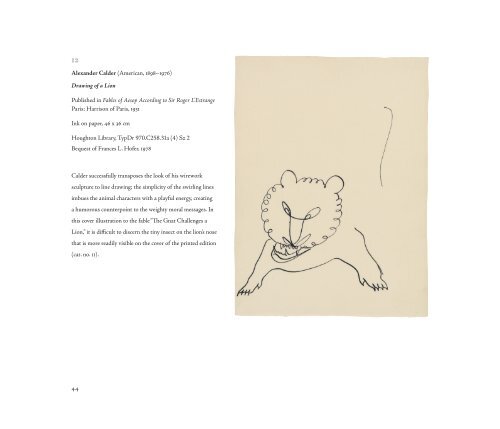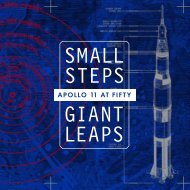Animals Are Us: Anthropomorphism in Children’s Literature; Celebrating the Peter J. Solomon Collection
Why do we tell stories to children through and about animals? Are there reasons why we shouldn’t? Animals Are Us invites explores these questions and more through influential historic examples of anthropomorphism in dialogue with contemporary books drawn from the collection of Peter J. Solomon (Harvard College Class of 1960, MBA 1963) and the holdings of Houghton Library. The exhibition invites you to engage critically with animal anthropomorphism, and delight in the artfulness of this enduring literary genre. Catalog of an exhibition on view at Houghton Library, Harvard University, September 1, 2021 - January 7, 2022.
Why do we tell stories to children through and about animals? Are there reasons why we shouldn’t? Animals Are Us invites explores these questions and more through influential historic examples of anthropomorphism in dialogue with contemporary books drawn from the collection of Peter J. Solomon (Harvard College Class of 1960, MBA 1963) and the holdings of Houghton Library. The exhibition invites you to engage critically with animal anthropomorphism, and delight in the artfulness of this enduring literary genre.
Catalog of an exhibition on view at Houghton Library, Harvard University, September 1, 2021 - January 7, 2022.
Create successful ePaper yourself
Turn your PDF publications into a flip-book with our unique Google optimized e-Paper software.
12<br />
Alexander Calder (American, 1898–1976)<br />
Draw<strong>in</strong>g of a Lion<br />
Published <strong>in</strong> Fables of Aesop Accord<strong>in</strong>g to Sir Roger L’Estrange<br />
Paris: Harrison of Paris, 1931<br />
Ink on paper, 46 x 36 cm<br />
Houghton Library, TypDr 970.C258.31a (4) Sz 2<br />
Bequest of Frances L. Hofer, 1978<br />
Calder successfully transposes <strong>the</strong> look of his wirework<br />
sculpture to l<strong>in</strong>e draw<strong>in</strong>g; <strong>the</strong> simplicity of <strong>the</strong> swirl<strong>in</strong>g l<strong>in</strong>es<br />
imbues <strong>the</strong> animal characters with a playful energy, creat<strong>in</strong>g<br />
a humorous counterpo<strong>in</strong>t to <strong>the</strong> weighty moral messages. In<br />
this cover illustration to <strong>the</strong> fable “The Gnat Challenges a<br />
Lion,” it is difficult to discern <strong>the</strong> t<strong>in</strong>y <strong>in</strong>sect on <strong>the</strong> lion’s nose<br />
that is more readily visible on <strong>the</strong> cover of <strong>the</strong> pr<strong>in</strong>ted edition<br />
(cat. no. 11).<br />
44



